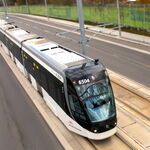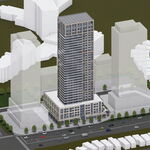How do express trains work with the LSE being forced onto only 2 tracks though?
Yeah, I was under the impression that a line requires 3 tracks in order to run express service. Hence why I was disappointed to see the Davenport Diamond guideway was only constructed wide enough to accomodate 2 tracks.
This is not really a change from the status quo, in sections with four tracks - i.e. from Union to Scarborough, you have Stouffville make most stops while LSE skips (thus effectively always running "express") on the inner section, beyond Scarborough you are in the same place you are today.
But, to be clear 2 tracks is fine for express trains and is just how express trains work on the large parts of the Paris RER and in rail systems across Asia - select stations have overtake tracks where expresses pass stopped locals + there is remaining triple track which could be expanded, you can also have some trains run express for parts of their journeys until they catch a leading train. This is enough to run a fairly high frequency of both local and express trains, the main drawback is you can't have some number of Stouffville trains become expresses when they hit Scarborough by popping onto the express tracks.
There is on one hand a reliability cost where if one track goes down you can't put all trains onto the local or express track easily, but on the other hand having a ton of trains switching from local to express tracks is going to lead to a ton of reliability and scheduling issues anyway (just look at the NY subways issue with merge conflicts etc, and GO trains are bigger and slower, even if EMUs).
^ It half works if the Stouffville line runs "wrong main" - ie eastward trains on the northmost track - because then westbound locals can be interwoven on the second track.
Presumably LSE will remain three tracks from Scarboro Jct out to Guildwood, which puts us back to 1967 in terms of track capacity for LSE..
ML has gradually walked back the investment in track that was supposed to happen east of Guildwood. The big losers in all of this will be VIA, and anyone hoping for an express GO ride west of Pickering.
The added investment of a flyover(under?) and further capacity east of Guildwood is a very prudent investment imho. If this has been cancelled, I'm not impressed.
- Paul
This is not the plan and frankly is the kind of thing that would create a lot of delays and conflicts at the junction, as well as confusing ops on Stouffville, and for no substantial benefit when the interleaving is of locals and we are prepping for a fourth track anyways.
All of this stuff is kind of water under the bridge at this point, they've been planning to do it for at least 3 years since I did that interview.




